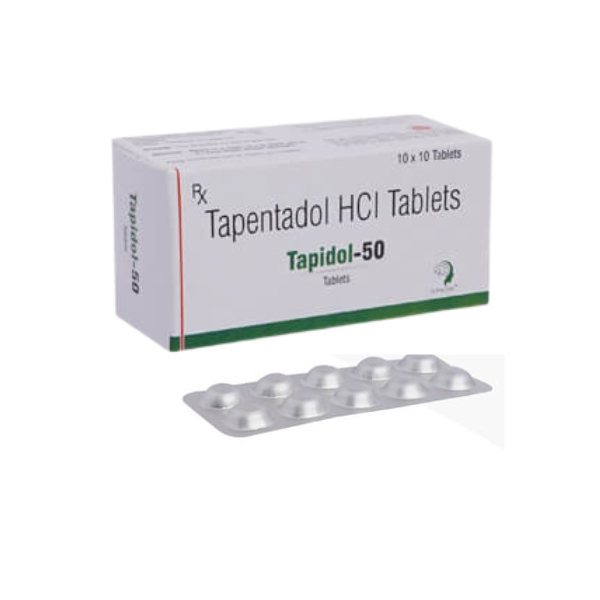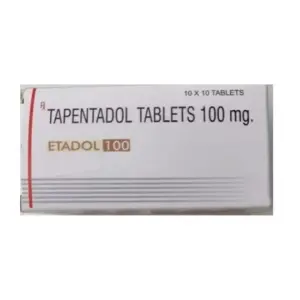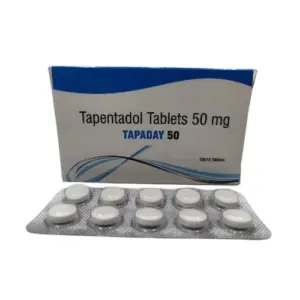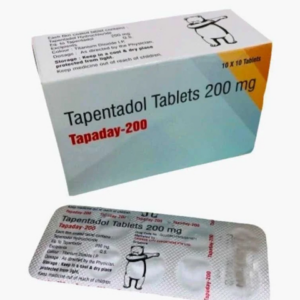Tapidol 50 mg is a prescription medication used to relieve moderate to severe pain. It contains Tapentadol, a powerful painkiller that works differently from traditional opioids. Tapidol is especially effective for conditions where pain is constant or linked to nerve damage. Whether the pain comes from surgery, an injury, or a chronic condition like arthritis or nerve damage, Tapidol 50 mg can provide effective relief when other medications fall short.
In this article, you’ll learn what Tapidol 50 mg is, how it works, what it treats, possible side effects, safety precautions, and answers to common questions.
What is Tapidol 50 mg?
Tapidol 50 mg is a centrally acting opioid analgesic. It contains the active ingredient Tapentadol Hydrochloride, which belongs to a class of drugs known as opioid pain relievers. Tapentadol is known for its dual mechanism of action: it reduces pain by binding to opioid receptors and by enhancing the levels of norepinephrine in the brain.
This combination makes Tapidol particularly helpful for managing both acute and chronic pain, especially pain caused by nerve damage.
How Tapidol 50 mg Works
Tapidol 50 mg works by targeting two different systems in the brain and spinal cord to reduce the feeling of pain:
-
Opioid Mechanism: It binds to mu-opioid receptors in the brain to block pain signals.
-
Norepinephrine Reuptake Inhibition: It prevents the reabsorption of norepinephrine, a chemical messenger that plays a role in pain processing, thus boosting pain control.
Together, these mechanisms allow Tapidol to relieve both nociceptive (physical) and neuropathic (nerve-related) pain, making it more effective than many traditional pain relievers.
Uses of Tapidol 50 mg
Doctors prescribe Tapidol 50 mg to manage a variety of painful conditions where over-the-counter pain relievers are not effective. Common uses include:
-
Post-surgical pain
-
Pain after injury or trauma
-
Pain due to arthritis (osteoarthritis or rheumatoid arthritis)
-
Chronic lower back pain
-
Diabetic nerve pain (diabetic neuropathy)
-
Fibromyalgia
-
Sciatica or nerve-related back pain
Tapidol is usually recommended when other non-opioid pain medications (like paracetamol or NSAIDs) have not provided enough relief.
Dosage and Administration
Always follow your doctor’s instructions for using Tapidol 50 mg. The dosage can vary depending on the severity of the pain and your overall health.
Typical Dosage:
-
Adults: One tablet (50 mg) every 4 to 6 hours as needed for pain.
-
The maximum dose in a day should generally not exceed 600 mg (12 tablets), unless directed by a doctor.
How to Take:
-
Take Tapidol with a full glass of water.
-
You can take it with or without food.
-
Swallow the tablet whole; do not crush or chew it.
Benefits of Tapidol 50 mg
Tapidol 50 mg is especially valued for its fast and reliable pain relief, with benefits such as:
Dual Action:
Tapentadol works through two mechanisms, offering stronger and more complete pain control, especially for nerve-related pain.
Fast Onset:
It starts working within 30 to 60 minutes of intake, offering quick relief for acute pain.
Lower GI Side Effects:
Compared to older opioids like morphine, Tapentadol may cause less constipation and nausea.
Suitable for Chronic Pain:
Tapidol can be used as part of a long-term pain management plan when taken under medical supervision.
Side Effects of Tapidol 50 mg
Like all strong painkillers, Tapidol 50 mg may cause side effects. Most are mild and go away as your body adjusts to the medication.
Common Side Effects:
-
Drowsiness
-
Dizziness
-
Nausea or vomiting
-
Constipation
-
Headache
-
Fatigue
Serious Side Effects:
-
Breathing difficulties
-
Fainting or confusion
-
Severe allergic reactions (rash, swelling, itching)
-
Seizures
-
Slow heart rate
Seek medical attention if you experience serious side effects, especially trouble breathing or severe dizziness.
Safety Advice
Tapidol is a controlled substance and should only be taken under medical supervision. Follow these safety tips:
Liver Disease:
Tapentadol is processed by the liver. If you have liver problems, your doctor may lower the dose or monitor you closely.
Kidney Disease:
Patients with moderate to severe kidney impairment should use Tapidol with caution. Dose adjustments may be necessary.
Pregnancy & Breastfeeding:
Tapidol is not recommended during pregnancy or breastfeeding. It can pass to the baby and cause serious side effects or withdrawal symptoms.
Alcohol & Other Drugs:
Avoid alcohol, sedatives, and other opioids while taking Tapidol. Combining them increases the risk of dangerous side effects, including breathing problems and coma.
Driving:
Do not drive or operate heavy machinery after taking Tapidol, as it may cause drowsiness and dizziness.
Drug Interactions
Tapidol 50 mg can interact with other medications, increasing the risk of side effects. Let your doctor know if you take:
-
Other opioids
-
Antidepressants (SSRIs, SNRIs, MAO inhibitors)
-
Sleeping pills or sedatives
-
Anti-seizure medications
-
Antihistamines
Combining Tapidol with these drugs may increase the risk of central nervous system depression, seizures, or serotonin syndrome.
Storage Instructions
-
Store at room temperature (20–25°C).
-
Keep away from moisture and sunlight.
-
Keep out of reach of children.
-
Do not use expired medication.
Frequently Asked Questions (FAQs)
Q1. How long does Tapidol 50 mg take to work?
Most people feel relief within 30 to 60 minutes after taking a dose.
Q2. Is Tapidol addictive?
Yes, Tapidol is an opioid and can be habit-forming if misused. Take it exactly as prescribed.
Q3. Can I stop using Tapidol suddenly?
No. Stopping Tapidol suddenly can lead to withdrawal symptoms. Always taper off under your doctor’s guidance.
Q4. Can Tapidol be used for migraines or headaches?
It is not usually recommended for headaches. Ask your doctor for safer alternatives for migraine treatment.
Q5. Is Tapidol suitable for children?
Tapidol is not recommended for children under 18 years unless specifically prescribed by a pediatric specialist.





Reviews
There are no reviews yet.